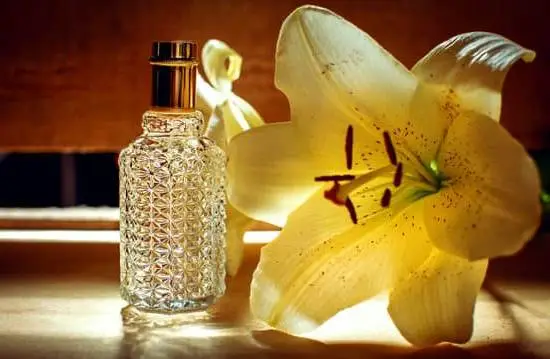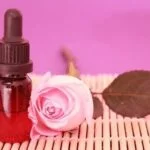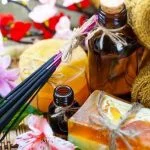Aromatherapy has long been recognized for its therapeutic benefits in promoting relaxation, reducing stress, and enhancing overall well-being. One popular way to enjoy the healing properties of essential oils is through aromatherapy candles. These fragrant candles are not only visually appealing but also fill your space with soothing scents that can uplift your mood and create a calming ambiance.
If you’ve ever wondered how to make aromatherapy candles at home, you’re in the right place. In this article, we will guide you through the process of creating your own personalized aromatherapy candles, allowing you to harness the power of essential oils to enhance your daily life.
To make aromatherapy candles at home, you will need specific supplies and materials. In the next section, we will provide a detailed list of everything you’ll need to get started. From waxes and fragrances to containers and wicks – no detail will be overlooked. But before we dive into the specifics, let’s discuss why these candles are so beneficial.
Aromatherapy candles offer numerous advantages over conventional scented candles. While regular candles may simply provide a pleasant fragrance, aromatherapy candles go beyond that by incorporating essential oils known for their therapeutic effects.
These oils interact with our olfactory system – our sense of smell – stimulating specific reactions in our brain that can evoke emotions and improve our mental state. Aromatherapy candles offer an effective way to relax after a long day, promote better sleep, alleviate stress or anxiety, boost focus and concentration, or even relieve certain physical ailments.
In the following sections of this article, we will explore in detail all aspects of making aromatherapy candles at home. We will guide you through selecting the right wax for your needs, choosing suitable fragrances based on their effects on mood and well-being, adding colors using natural dyes or colorants for visually appealing creations, preparing containers for candle-making, selecting appropriate wicks, and troubleshooting common issues that may arise during the process.
So let’s get started on your journey to creating beautiful and therapeutic aromatherapy candles.
Gathering Supplies
To create your own aromatherapy candles at home, it is essential to gather all the necessary supplies beforehand. Having everything prepared and organized will make the candle-making process much smoother and enjoyable. Here is a detailed list of the materials you will need:
1. Wax: The main ingredient in candles, wax provides fuel for the flame. There are various types of wax to choose from, such as soy wax, beeswax, and paraffin wax. Consider your preferences and the specific benefits each wax offers before making a decision.
2. Fragrance: Essential oils are used to create scents in aromatherapy candles. Choose high-quality essential oils that not only smell delightful but also have therapeutic properties that align with your desired mood or wellness goals.
3. Wick: The wick is responsible for igniting and maintaining the flame in a candle. Select a wick that suits the size of your container and ensures even burning throughout the candle’s life.
4. Containers: Decide on containers that suit your aesthetic preferences and accommodate the amount of wax you plan to use. Options include glass jars, metal tins, ceramic vessels, or any other heat-resistant containers.
5. Colorants: If you wish to add color to your candles, consider using natural dyes specifically formulated for candle-making or liquid candle colorants suitable for use with different types of wax.
Choosing the Right Wax
When it comes to making aromatherapy candles at home, one of the most important decisions you’ll need to make is choosing the right wax. There are several different types of waxes available, each with its own unique characteristics and benefits. Here, we’ll explore some of the most popular options and their pros and cons.
1. Soy Wax: Soy wax is made from soybean oil and is known for its clean burn and long-lasting scent throw. It is also a renewable resource, making it an eco-friendly choice for candle-making. Additionally, soy wax has a lower melting point, which means it takes less time to melt compared to other waxes. However, soy wax can be more expensive than other options.
2. Beeswax: Beeswax is a natural byproduct of honey production and has been used in candle-making for centuries. It has a warm, honey-like aroma and produces a beautiful, golden flame. Beeswax candles also have a longer burn time compared to other waxes. However, beeswax can be more expensive than other options and may not hold fragrance as well.
3. Paraffin Wax: Paraffin wax is one of the most commonly used waxes in commercial candle-making due to its affordability and ease of use. It has a high melting point, which means it takes longer to melt compared to other waxes. Paraffin candles also tend to have a stronger scent throw compared to natural waxes like soy or beeswax. However, paraffin wax is derived from petroleum, making it less environmentally friendly.
4. Coconut Wax: Coconut wax is made from coconuts and offers a smooth, creamy appearance when solidified. It has excellent fragrance retention capabilities and provides a clean burn with minimal soot or smoke. Coconut wax also has good heat resistance, making it suitable for use in warmer climates. However, coconut wax can be more expensive and harder to find compared to other options.
Remember, when choosing a wax for your aromatherapy candles, consider factors such as burn time, scent throw, eco-friendliness, and cost. It’s also essential to experiment with different waxes to find the one that suits your preferences and candle-making goals best.
Selecting the Perfect Fragrance
Aromatherapy candles are not only visually appealing but also provide numerous benefits for mood and well-being. One crucial aspect of making these candles is selecting the perfect fragrance, which comes from choosing the right essential oils.
Essential oils are highly concentrated plant extracts that have distinct scents and therapeutic properties. By carefully choosing the essential oils for your aromatherapy candles, you can create a personalized and effective scent that promotes relaxation, uplifts the mood, relieves stress, or even aids in sleep.
When selecting essential oils for aromatherapy candles, it’s crucial to consider their effects on mood and well-being. Some popular options include lavender, which has a calming effect and helps with anxiety and insomnia; peppermint, known for its invigorating properties that enhance focus and alleviate headaches; eucalyptus, which promotes respiratory health and clears the mind; and citrus oils like lemon or orange, which uplift the mood and bring a sense of energy.
To choose the perfect fragrance combination for your aromatherapy candles, it’s important to experiment with different essential oil blends. Start by selecting one or two main essential oils that align with your desired effects. Then, you can add complementary scents or mix in smaller amounts of other oils to create a more complex aroma profile. Keep in mind that some essential oils have stronger scents than others, so it’s crucial to use them sparingly.
It’s also worth noting that certain essential oils may have specific safety considerations or contraindications. For example, some oils may not be suitable for pregnant individuals or those with certain medical conditions. Therefore, it’s important to research each essential oil before using it in your candle-making process to ensure maximum safety and effectiveness.
| Essential Oil | Main Effects | Scent |
|---|---|---|
| Lavender | Calming, sleep-promoting, anxiety relief | Floral, herbaceous |
| Peppermint | Invigorating, focus-enhancing, headache relief | Minty, refreshing |
| Eucalyptus | Respiratory health promotion, mental clarity | Cooling, refreshing |
| Lemon |
Adding Colors
Adding color to your aromatherapy candles can enhance the visual appeal and create a more vibrant and inviting atmosphere. There are various ways to add color to your candles, but using natural dyes or colorants is not only eco-friendly but also adds an element of authenticity to your homemade creations. Here are some tips to help you achieve visually appealing aromatherapy candles:
1. Natural Dyes: One way to add color to your candles is by using natural dyes derived from plant-based sources. These dyes are often obtained from fruits, vegetables, herbs, or spices and can provide beautiful and subtle hues to your candles. Some popular natural dye options include beetroot powder for a pinkish shade, turmeric for a golden yellow hue, or spinach powder for a green tint.
2. Essential Oils with Color: Another option is to choose essential oils that naturally have color, such as lavender essential oil with its light purple tone or sweet orange essential oil with its vibrant orange shade. By selecting essential oils based on their aromatic properties as well as their color, you can combine both fragrance and visual appeal in your aromatherapy candles.
3. Mica Powder: If you prefer more intense and metallic colors, mica powder is an excellent choice. Available in various shades, mica powders are finely ground minerals that create shimmering effects when added to wax. Be cautious when using mica powders as they can clog the wick if used excessively.
When adding colors to your candles, it’s important to start with small amounts and gradually increase until you achieve the desired shade since it’s easier to add more color than it is to remove it. Remember that different waxes may react differently with color additives, so testing small batches beforehand is recommended.
Overall, adding natural dyes or colorants to your aromatherapy candles can elevate their aesthetic appeal, creating beautiful pieces that not only enhance your mood but also add a touch of charm to any space. Experimenting with different colors and combinations allows you to personalize your candles and enjoy the creative process of candle-making.
Preparing the Containers
Gathering the Containers
Before you start making your aromatherapy candles, it’s important to gather the containers that you will be using. The type of container you choose can affect the overall look and feel of your homemade candles. Some popular options for candle containers include glass jars, tin cans, ceramic pots, or even vintage teacups. When selecting your containers, make sure they are heat-resistant and can withstand the temperature of melted wax.
Cleaning and Preparing the Containers
Once you have gathered your containers, it’s essential to clean them thoroughly before use. Any dirt or residue on the container could interfere with the adhesion of the wax or affect the visual appeal of the finished candle. To clean your containers, wash them with warm soapy water and rinse well. For stubborn residue, you may need to use a scrub brush or sponge for a more thorough cleaning.
After cleaning, ensure that your containers are completely dry before proceeding with candle-making. Any moisture can cause issues with adhesion or create bubbles in your candles. You can air-dry them on a towel or use a hairdryer on low heat setting to speed up the drying process.
Preparing Container Surfaces
To help improve adhesion and ensure that your candles stay in place while burning, it’s recommended to prepare the surfaces of your containers. One common technique is to use a hot glue gun to secure the wicks onto the bottom center of each container. This will prevent the wick from moving around as you pour in the hot wax.
Another option is to use a small amount of adhesive putty or double-sided tape at the base of each wick tab to hold it down securely. Just make sure that whatever method you choose is safe for candle-making and won’t pose a fire hazard.
By properly preparing your containers before making aromatherapy candles at home, you can ensure a smooth candle-making process and create beautiful, long-lasting candles that will bring relaxation and tranquility to your space.
The Wick
When choosing a wick for your aromatherapy candles, consider factors such as the type of wax you are using, the diameter of your candle container, and the desired burn time. Cotton wicks are commonly used for candle-making due to their consistent burn quality and clean flame. They come in various sizes, from small to large, which helps determine their performance based on the size of your container.
To find the appropriate wick size for your candle, you can refer to wick charts provided by manufacturers or use trial and error methods. Generally, a larger wick is needed for containers with a larger diameter or deeper wax pool, while smaller containers require smaller wicks.
Proper placement of the wick is equally important to ensure an optimal burn. The ideal position is at the center of the container, ensuring equal distance from each side. You can use tools such as wick stickers or hot glue to secure the wick in place while pouring hot wax. Additionally, using a wick holder can help keep the wick straight during pouring and prevent it from moving or tilting.
| Wick Size | Container Diameter | Burn Time |
|---|---|---|
| Small | Less than 2 inches | 4-6 hours |
| Medium | 2-3 inches | 6-8 hours |
| Large | 3 inches or more | 8-10 hours |
Candle-Making Process
The candle-making process is the heart of creating your own aromatherapy candles at home. This section will provide you with a detailed walkthrough of each step, from melting the wax to pouring the candles. By following these instructions, you can create beautiful and fragrant candles that will enhance your mood and well-being.
1. Melting the Wax: The first step in making your aromatherapy candles is melting the wax. You can use a double boiler or a microwave-safe container to melt your chosen wax. Be sure to follow the specific instructions for melting temperature and duration provided by the wax manufacturer.
2. Adding Fragrance: Once the wax has melted, it’s time to add fragrance. Measure out the desired amount of essential oil based on your personal preference or the recommended amount for your chosen fragrance blend. Stir the essential oil into the melted wax thoroughly to ensure even distribution.
3. Adding Color: If you want to add color to your aromatherapy candles, this is the time to do it. Natural dyes or colorants can be added to achieve your desired hue. Start with a small amount and gradually add more until you reach your desired color intensity. Remember that some fragrances may slightly alter the color, so keep that in mind when choosing your dye.
4. Pouring the Candles: Now that your fragrance and color have been added, it’s time to pour the melted wax into your prepared containers. Make sure your containers are clean and dry before pouring in the wax mixture. Slowly and carefully pour the melted wax into each container, leaving about half an inch of space from the rim.
Following these steps will ensure that you create high-quality and effective aromatherapy candles at home. Take your time during each stage of the process to achieve optimal results.
| Step | Description |
|---|---|
| Melting the Wax | Melt the chosen wax in a double boiler or microwave-safe container according to the manufacturer’s instructions. |
| Adding Fragrance | Measure out the desired amount of essential oil and stir it into the melted wax thoroughly. |
| Adding Color | Add natural dyes or colorants gradually until you achieve your desired color intensity. |
| Pouring the Candles | Pour the melted wax mixture slowly and carefully into your prepared containers, leaving space from the rim. |
Troubleshooting Common Issues
Uneven Surface or Sinkholes
One common issue that candle-makers may encounter is an uneven surface or sinkholes on their finished candles. This can be frustrating, especially after putting in the effort to create a beautiful product. The main cause of this problem is often temperature fluctuations while the candle is cooling. To prevent this issue, it is important to ensure that the wax is cooled slowly and at a consistent temperature.
A solution to this problem is to use a technique called “double-pouring.” After pouring the initial layer of melted wax into the container, allow it to cool slightly before pouring a second layer on top. This helps to fill in any sinkholes or uneven spots and creates a smooth surface. Another tip is to avoid pouring the wax if the room temperature is too hot, as this can also lead to uneven cooling.
Tunneling
Tunneling refers to when a candle burns straight down through its center, leaving wasted wax along the sides of the container. It occurs when the wick does not create enough heat to melt all of the wax around it, resulting in an uneven burn pattern. This can be caused by using a wick that is too small for your container size or improper wick placement.
To fix this problem, it’s essential to choose the right wick size for your container diameter and material type. You may need to experiment with different sizes until you find one that provides an even burn across the entire surface of the candle. Additionally, ensure that you position the wick properly in the center of your container before pouring in the melted wax.
Sooty Flames
Sooty flames are another common issue that can occur during candle-burning and may leave unsightly black residue on both your candles and surrounding surfaces. These black marks are usually caused by using a wick that is too large for your container or using low-quality wax that contains impurities.
To prevent sooty flames, it is crucial to select the right wick size for your specific candle and container combination. If you notice black residue forming on the surface of your candles, consider trimming the wick slightly to reduce its size. Additionally, opting for high-quality wax without impurities can significantly reduce the amount of soot produced during burning.
By being aware of these common issues in candle-making and applying the suggested solutions, you can achieve better results and create beautiful aromatherapy candles at home. Remember that troubleshooting is part of the learning process, so don’t be discouraged if you encounter any problems along the way. With practice and patience, you’ll soon master the art of making perfectly crafted candles.
Letting the Candles Cure
When making aromatherapy candles at home, one crucial step that should not be overlooked is allowing the candles to cure. Curing refers to the process of letting the candle sit undisturbed after it has been poured, allowing the wax and fragrance to fully bond and reach their optimal scent throw. This step is essential for achieving the best possible aroma and ensuring a longer-lasting candle.
Why Is Curing Important?
During the curing process, the fragrance in the candle continues to blend with the wax, resulting in a more potent scent when burned. Allowing the candle to cure also helps eliminate any potential issues with performance and consistency.
When a candle cures, it promotes better scent distribution throughout the wax, reduces tunneling (when a candle burns unevenly), and prevents issues like excessive soot or poor fragrance diffusion. Therefore, taking the time to properly cure your homemade candles will greatly enhance their overall quality.
How Long Does It Typically Take?
The Duration of Curing Can Vary Depending on Various Factors Such As;
- The type of wax used
- The size and thickness of the candles
- The type and amount of fragrance oils used
As a general guideline, most homemade candles benefit from at least 48 hours of curing time. However, certain waxes may require longer periods of up to two weeks for optimal results. It is recommended to follow the specific instructions provided by your chosen wax manufacturer for accurate curing times.
During this period, it’s important to store your candles in a cool, dry place away from direct sunlight or drafts. This allows them to solidify properly and develop their desired scent characteristics without any external factors affecting their quality.
Taking the time to let your aromatherapy candles cure will result in enhanced scent throw and longevity, allowing you to fully enjoy their therapeutic benefits once they are ready for use. So exercise patience during this process and savor the anticipation of experiencing the full potential of your homemade candles.
Enjoying the Benefits
In conclusion, making aromatherapy candles at home is a rewarding and fulfilling process that allows you to create personalized candles tailored to your preferences. By following the step-by-step instructions outlined in this article, you can enjoy the numerous benefits of aromatherapy candles and create a soothing ambiance in your home.
Once you have successfully made your aromatherapy candles, it’s important to maximize the aromatherapy experience. One way to do this is by selecting the appropriate essential oils for your desired mood or well-being effects. Experimenting with different scents and blends can help you find the perfect combination that promotes relaxation, stress relief, or focus, depending on your needs. Remember to follow recommended guidelines regarding essential oil usage to ensure safety.
Additionally, creating a soothing ambiance with your homemade candles involves more than just lighting them up. Consider pairing them with other relaxation techniques like meditation or setting up a cozy space where you can fully unwind. Dimming the lights, playing soft music, and adding some comfortable cushions or blankets can enhance the overall experience.
Furthermore, it’s important to practice safety when using aromatherapy candles. Always keep an eye on burning candles and never leave them unattended. Place your candles on stable surfaces away from flammable objects and out of reach of children or pets. Extinguish the flame before leaving the room or going to sleep.
Frequently Asked Questions
How Do You Make Aromatherapy Candles?
Making aromatherapy candles involves a few key steps. The first step is to gather all the necessary supplies, including candle wax, wicks, a double boiler or a melting pot, a thermometer, essential oils, and candle containers. Next, melt the candle wax using the double boiler or melting pot while monitoring the temperature with a thermometer.
Once the wax has reached the desired temperature, carefully add in the chosen essential oils and stir gently to ensure they are evenly distributed throughout the wax. Then, prepare the containers by attaching wicks to their bottoms and securing them in place. Slowly pour the scented wax into each container, allowing it to cool and solidify before trimming the wick and enjoying your homemade aromatherapy candles.
How Do You Make Strong Smelling Candles With Essential Oils?
To create strong-smelling candles with essential oils, specific factors need to be considered during the candle-making process. Choosing high-quality essential oils that have strong fragrances is crucial for achieving a potent scent. It’s recommended to opt for pure essential oils rather than synthetic fragrance oils as they tend to have a more authentic aroma.
Additionally, increasing the concentration of essential oils in the candle can enhance its scent strength. However, it’s important not to exceed maximum recommended usage rates for safety reasons and to ensure that excessive oil doesn’t affect the burn quality of the candle.
What Makes a Candle an Aromatherapy Candle?
Aromatherapy candles are differentiated from regular candles by their focus on delivering therapeutic benefits through fragrance. They are specifically designed to promote relaxation, stress relief, improved mood, or other targeted effects on mental and emotional well-being using essential oils as their primary scent source.
These candles often feature carefully selected blends of essential oils known for their soothing or invigorating properties and can be used during meditation or as part of self-care routines. While regular candles primarily serve decorative purposes or provide ambient light, aromatherapy candles prioritize creating an environment conducive to enhancing one’s overall sense of well-being through olfactory stimulation.

Are you looking for a natural way to improve your health and wellbeing?
If so, aromatherapy may be the answer for you.





